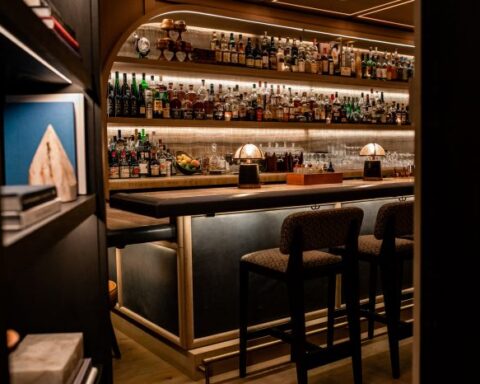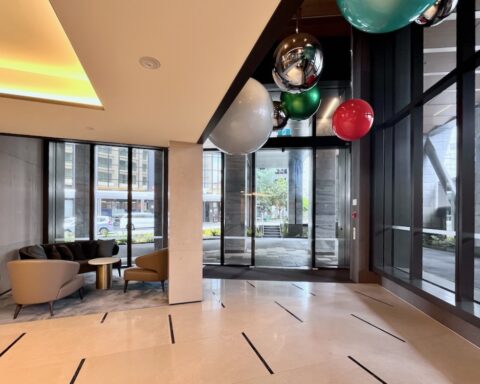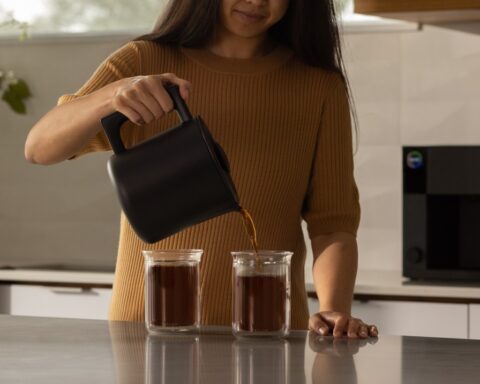
San Francisco’s iconic Palace Hotel
They don’t make hotels like this anymore. With its 11-foot ceilings, wide hallways, Italian marble columns, and crystal chandeliers, San Francisco’s Palace Hotel is the embodiment of everything the City by the Bay was and continues to be: elegant, sophisticated, chic, contemporary, and inclusive. Few hotels in the nation can claim such significant relevance within their cities, but by gracefully marrying its rich history with current comforts, the Palace (part of Marriott Hotels & Resorts Luxury Collection) has maintained San Francisco hospitality icon status for nearly 150 years, racking-up more than just a few notable moments and achievements. Here are a few:
· When Palace Hotel opened in 1875, it was the largest hotel in the world.
· The original building had as a main entrance a carriage arrival located on New Montgomery Street. Guests were driven inside the building and led to what today is the Garden Court.
· The Palace was the first hotel on the west coast to have hydraulic elevators. They held 30 to 40 seated passengers who enjoyed tea service en route to their rooms.

What today is the Garden Court was once a carriage arrival area
· After the hotel was destroyed by fires from the 1906 earthquake, a revitalized Palace Hotel opened in 1909 with state-of-the-art facilities and architectural details inspired by Renaissance Revivalism. The new hotel, designed by George Kelham of Trowbridge and Livingston, was a worthy rival to the grand hotels of Europe.
· In 1909, Maxfield Parrish was commissioned by the hotel to paint “The Pied Piper,” a 6’ x 16’ mural, for which the hotel’s popular and iconic Pied Piper bar is named. Parrish painted himself as the piper; following him are his wife, two sons, and his mistress. Indulge in a Pied Piper signature cocktail that pays homage to the hotel’s parade of famous guests, such as the Charlie Chaplin, the Harding Old Fashioned, and the Boothby, a Manhattan named for William Boothby, San Francisco’s pre-prohibition famed mixologist. Catch live music here from 5 – 8pm every Thursday and Friday.
· Additional famed art is found in two murals painted by San Francisco artist Antonio Sotomayor. Born in Bolivia, Sotomayor came to San Francisco in 1923 and found work as a dishwasher in the Palace kitchen.

Maxfield Parrish’s ‘The Pied Piper’ hangs over Palace Hotel’s Iconic Pied Piper Bar
· The hotel’s famously delicious Green Goddess dressing was created in 1923 by in-house Chef Phillip Roemer and is still served at the Garden Court today.
· In the grand lobby of Palace Hotel are two royal chairs, or thrones, that were gifts from King Kalakaua of Hawaii.
· In 1919, two luncheons hosted by President Woodrow Wilson took place at the Palace, each in support of the Versailles Treaty ending World War I.
· In 1945, with President Roosevelt in attendance, the official banquet honoring the opening session of the United Nations was held in the Garden Court.
· Since 1875, 19 United States Presidents have visited Palace Hotel. 13 of them have stayed the night in the opulent Presidential Suite.
· Mark Twain worked across the street in the Sharon Building and enjoyed numerous lunches in the Pied Piper bar.
· Oscar Wilde stayed at the Palace Hotel for two weeks in 1882 where he held ten lectures.

Palace Hotel’s Garden Court Garden Court boasts chandeliers made of Austrian crystal, weighing 750 pounds each. Photo, Fran Miller
· Widely acclaimed as one of the world’s most stunning dining rooms, the 8,000 sq. ft. Garden Court boasts chandeliers made of Austrian crystal, weighing 750 pounds each. In 1969, The Garden Court was designated San Francisco Landmark Number 18 by the Landmarks Preservation Advisory Board. Enjoy breakfast, lunch, and the hotel’s Signature Afternoon Tea here, featuring cuisine by Executive Chef David Teig, who also oversees all menus at the Pied Piper.
· Originally used as a ladies’ lounge and known informally as the “fainting room,” The French Parlor is located at the mezzanine level with windows overlooking the Garden Court. Back in the day, gentlemen would retire to the Pied Piper to drink brandy and smoke cigars while women headed to the French Parlor to unwind by loosening corsets that often caused them to faint.
· Palace Hotel is home to three ornate and historic ballrooms featuring the highest ceilings in the city, with original 1906 crystal chandeliers, vaulted ceilings, and luxurious charm. These glorious spaces are ideal for weddings and other celebratory occasions.

Palace Hotel Deluxe Suite Living Room

Palace Hotel Deluxe Suite Bedroom
· A Palace Hotel guest room aura is that of stepping into a luxurious San Francisco apartment where jazz plays softly in the background while martinis are poured. Each (select from a wide number of sizes and layouts) is bedecked in a sophisticated palette of midnight blue, charcoal, dove grey and plum. Dark wood furnishings, mixed metals, artistic lighting, and modern artwork are complemented by textured upholstered furnishings.
· The Palace is home to one of the few indoor heated pools in San Francisco. Theirs is an interior oasis, capped by a soaring, glass roof that reveals the city skyline and allows for indoor sunbathing. An adjacent, state-of-the-art fitness center offers new Life Fitness equipment and Peloton bikes.

Palace Hotel is home to one of San Francisco’s few indoor heated swimming pools
· Centrally located in the heart of downtown San Francisco, Palace Hotel is walking distance to nearly everything for which the city is known: Union Square, cable cars, the Embarcadero, Ferry Building Marketplace, Chinatown, AT&T Park, boutique and center shopping, cultural museums and theaters.
· Find even more historic details, mementos, and photos in the hotel’s carefully curated historical museum, Landmark 18—located in the area of the former Barber Shop across from the Rose Room at Palace Hotel.
Palace Hotel, 2 New Montgomery St., San Francisco
Photos courtesy of Palace Hotel, unless otherwise noted









Your article helped me a lot, is there any more related content? Thanks!